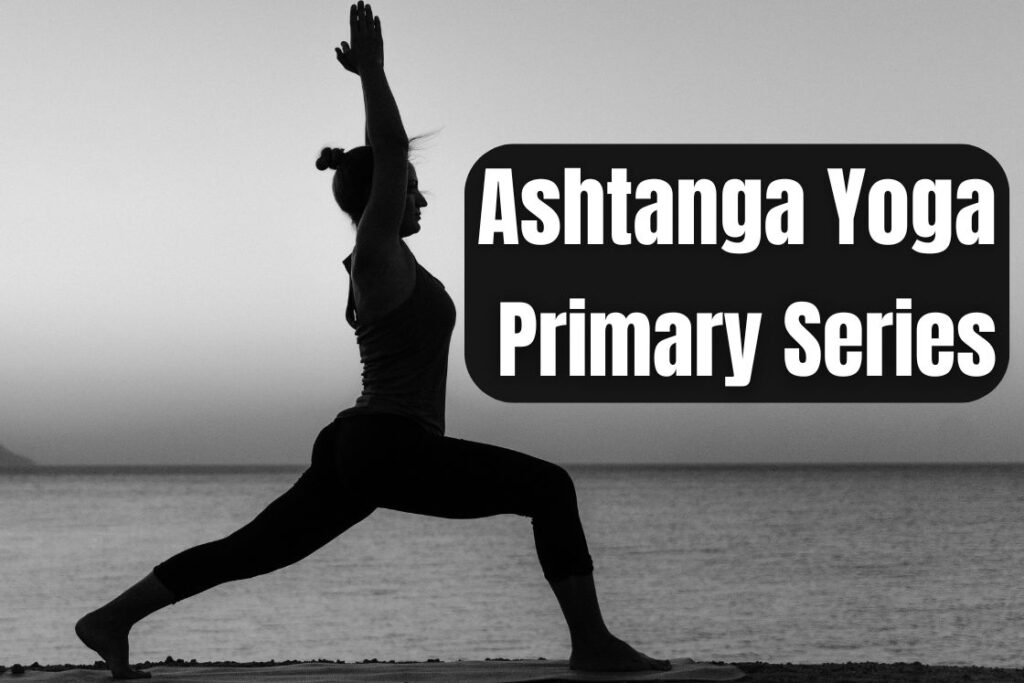
Ashtanga Yoga is a dynamic and disciplined type of yoga, typically practised by those that have developed power, flexibility, and stamina via constant effort. It requires dedication and persistence every posture have to be mastered earlier than transferring on to the subsequent.
On this technique, postures are linked via flowing vinyasa actions, synchronising every transition with a gentle breath (ujjayi pranayama). The system follows six mounted sequences, from foundational to superior, and is taught in the identical order all over the world, making it a really world apply.
This text focuses on the Major Collection the primary sequence in Ashtanga Yoga exploring its construction, function, and the way it lays the groundwork for deeper ranges of apply.
What’s major collection in ashtanga yoga?
The Major Collection is the start line of Ashtanga Yoga, offering the bottom for all different collection. It’s a set vinyasa sequence, the place every posture flows into the subsequent in concord with a measured breath rely. This coordination of motion and breath develops each bodily power and psychological focus.
First launched by Sri Okay. Pattabhi Jois in Mysore, India, the Major Collection is usually used as a day by day apply for dedicated Ashtanga college students. In Sanskrit, it’s known as Yoga Chikitsa, which means “yoga remedy,” as a result of the sequence is believed to purify and strengthen the physique whereas calming and focusing the thoughts.
Though it’s the first collection, many practitioners think about it one of the crucial difficult. It calls for stamina, precision, and aware alignment. By way of this sequence, college students acquire familiarity with vinyasa transitions and the self-discipline of the Ashtanga technique, constructing the muse required for the intermediate and superior collection that observe.
Advantages of the ashtanga yoga major collection
YThe postures of the Major Collection are organized in a exact vinyasa sequence designed to create delicate but highly effective therapeutic results. This circulation helps cleanse the physique’s nadis (vitality channels), permitting prana the life drive to maneuver extra freely. When vitality flows with out obstruction, the physique begins to heal, purify, and restore steadiness naturally.
With a clearer vitality circulation, you might discover enhancements in focus, confidence, willpower, and general thoughts physique consciousness.
On a bodily stage, the Major Collection builds power and adaptability, particularly within the core, higher physique, and legs. The ahead folds, backbends, and twists within the sequence assist launch stiffness, enhance posture, and assist spinal well being. These actions additionally support in detoxifying the nervous system.
The dynamic nature of the apply generates inside warmth, which helps the discharge of poisons via sweat. Mixed with particular drishti (gaze factors) and managed respiration, this warmth fosters focus, self-discipline, and meditative consciousness all through the apply.
Ashtanga major collection sequence(poses)
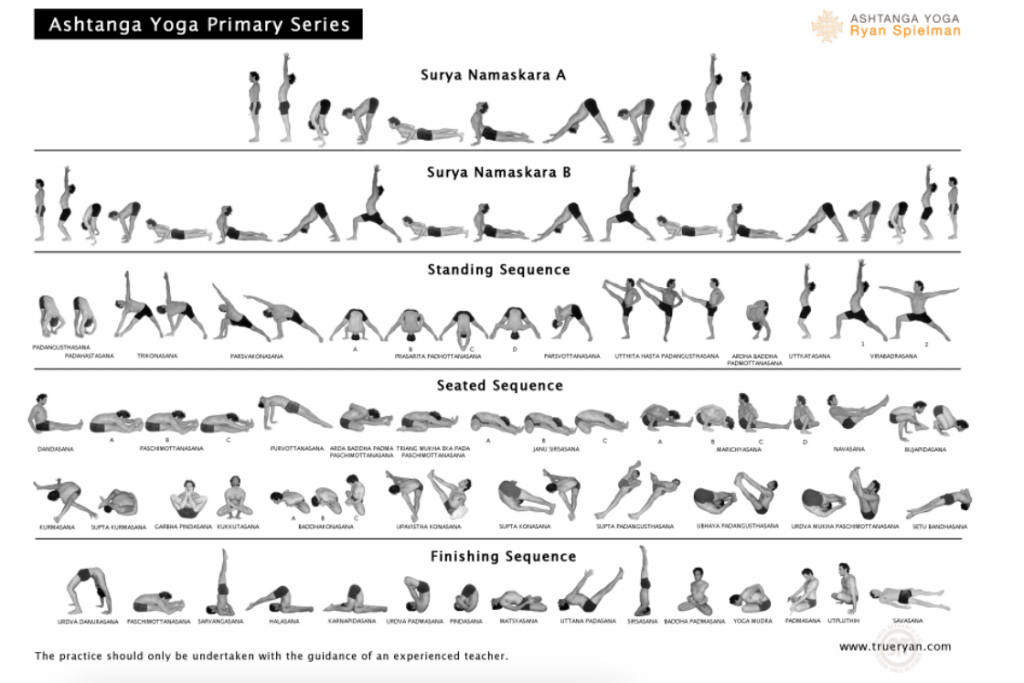
The Major Collection of Ashtanga Yoga follows a set order of postures, historically taught within the Mysore type. Earlier than starting the sequence, practitioners carry out 5 rounds every of Solar Salutation A (Surya Namaskara A) and Solar Salutation B (Surya Namaskara B) to heat up the physique, construct warmth, and put together the muscular tissues and joints.
The Major Collection is split into 4 elements:
- Standing Sequence – 13 foundational standing postures that construct power, steadiness, and alignment.
- Seated Sequence – 20 seated postures linked with vinyasa transitions to develop flexibility, hip opening, and core stability.
- Ending Sequence – 13 postures together with mild backbends, shoulder stands, and different inversions to revive steadiness and calm the nervous system.
- Last Three Postures – a brief closing set, ending with Shavasana (Corpse Pose) for deep relaxation and integration.
In whole, the Major Collection consists of 49 postures and 35 vinyasas. The sequence is discovered progressively: a licensed Ashtanga Yoga trainer first guides college students via every asana with its right vinyasa rely. As soon as memorised, college students practise the sequence independently at school whereas the trainer presents hands-on changes and particular person steering.
All Ashtanga Yoga courses begin with a gap mantra. The opening chant is as follows:
Om
Vande Gurunam Charanaravinde
Sandarshita Svatma Sukava Bodhe
Nih Sreyase Jangalikayamane
Samsara Halahala Mohashantyai
Abahu Purushakaram
Shankhacakrsi Dharinam
Sahasra Sirasam Svetam
Pranamami Patanjalim
Om
By way of this mantra, you’re ideally bowing right down to your guru and invoking the blessings of the sage Patanjali.
You then begin with Surya Namaskar A and B that are carried out 5 instances. Then it goes as follows;
1. Standing sequence
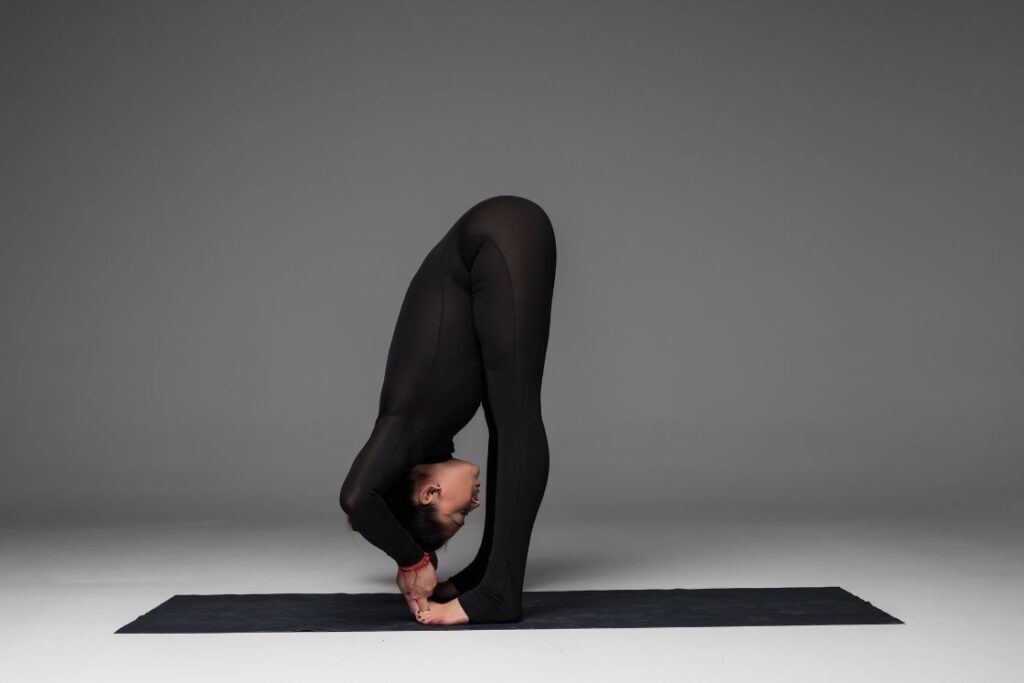
The Standing Sequence is the primary a part of the Ashtanga Yoga Major Collection and focuses on constructing power, stability, and correct alignment. It additionally units the rhythm of motion and breath that continues all through the apply.
The sequence begins with two ahead folds:
- Padangusthasana (Massive Toe Pose)
- Padahastasana (Palms-to-Ft Pose)
In each postures, the drishti (gaze level) is directed towards the nostril. These asanas lengthen the backbone, stretch the hamstrings, and put together the physique for deeper folds.
Subsequent comes a collection of standing postures for steadiness and hip opening:
That is adopted by two wide-legged ahead folds:
The sequence continues with balancing poses:
The primary vinyasa transition within the standing sequence begins from Utkatasana (Fierce or Chair Pose), transferring into Virabhadrasana I (Warrior I) and Virabhadrasana II (Warrior II). The drishti in Warrior I is on the thumbs; in Warrior II, it’s over the entrance hand. These postures interact the legs, strengthen the core, and domesticate focus earlier than transferring into the seated sequence.
2. Seated sequence
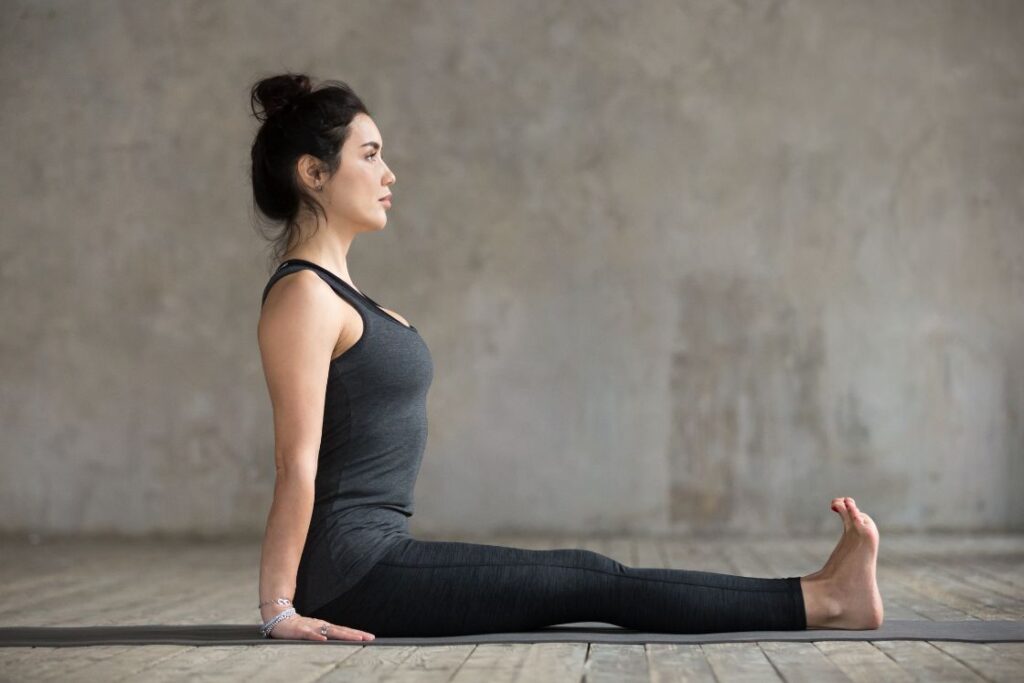
After the strengthening and stabilising Standing Sequence, the Seated Sequence shifts the apply inward, calming the thoughts and deepening flexibility. This a part of the Major Collection is usually described as its coronary heart, mixing ahead folds, twists, and hip openers that improve focus and launch rigidity.
The sequence begins with:
Subsequent come deeper hip openers and folds:
The sequence then strikes into therapeutic folds and twists:
- Janu Sirsasana A–C (Head-to-Knee Ahead Bend variations) — drishti: foot
- Marichyasana A–D (Sage Marichi’s Pose variations) — drishti: alternating between foot, nostril, and facet gaze relying on the variation
From right here, you transition into strengthening poses:
Difficult arm balances and ahead folds observe:
Subsequent is the household of angle poses, carried out 3 times:
- Baddha Konasana (Sure Angle Pose) — drishti: nostril
- Upavistha Konasana (Seated Angle Pose) — drishti: third-eye
- Supta Konasana (Sleeping Angle Pose) — drishti: nostril
The sequence concludes with reclining and backbend postures:
- Supta Padangusthasana (Mendacity Thumb-to-Foot Pose) — drishti: foot
- Ubhaya Padangusthasana (Each Thumbs-to-Ft Pose) — drishti: nostril
- Urdhva Mukha Paschimottanasana (Upward-Dealing with Ahead Stretch) — drishti: foot
- Setu Bandhasana (Bridge Pose) — drishti: nostril
- Urdhva Dhanurasana (Upward Bow Pose) — drishti: nostril
- Paschimottanasana (Prolonged West Stretch) — drishti: foot
From right here, the apply transitions into the Ending Sequence, which restores steadiness and prepares the physique and thoughts for closure.
3. Ending sequence
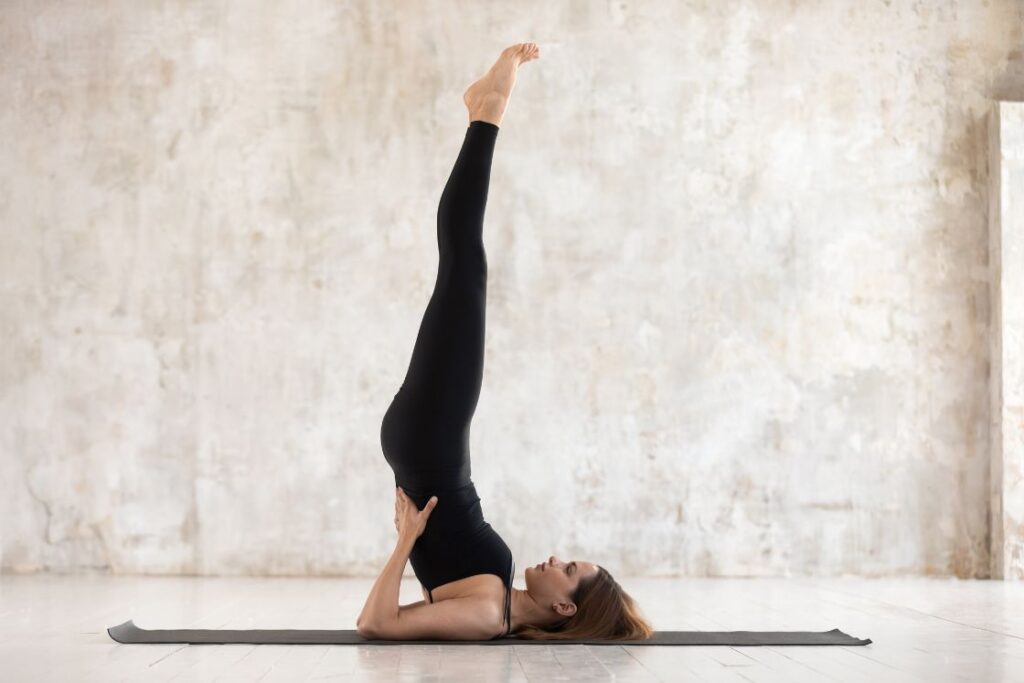
The Ending Sequence marks the closing stage of the Major Collection. These postures gradual the tempo of apply, deepen the breath, and put together the physique and thoughts for relaxation. Most of the asanas are mild inversions, which assist enhance blood circulation, calm the nervous system, and promote psychological readability.
The sequence begins with:
From right here, the main target shifts to seated and balancing postures:
- Utpluthi Padmasana (Elevated Lotus Pose) — drishti: nostril
- Pindasana (Embryo Pose) — drishti: nostril
- Matsyasana (Fish Pose) — drishti: nostril
- Uttana Padasana (Prolonged Foot Pose) — drishti: nostril
The sequence then consists of inversions that problem steadiness and management:
- Sirsasana (Headstand) — drishti: nostril
- Urdhva Dandasana (Upward Employees in Headstand) — drishti: nostril
Earlier than transitioning to the ultimate postures, practitioners relaxation briefly in Balasana (Baby’s Pose) drishti: nostril. The apply then concludes with Padmasana (Sure Lotus Pose) — drishti: nostril — adopted by Shavasana (Corpse Pose) for full leisure and integration of the apply
4. Last three postures
You’ll now be coming into the calming stage the place the asanas will put together you for the last word asana. First, you can be practising Yoga Mudra (drishti – third eye), adopted by Lotus Pose (drishti – nostril) and Lifted Lotus (drishti – nostril).
The ultimate pose to finish the first collection is the Corpse Pose which is carried out with closed eyes and relaxation for 10-Quarter-hour.
On the finish of the category, you’ll chant the closing ashtanga yoga mantra that marks the peaceable finish.
Om
Svasthi Praja Bhyaha Pari Pala Yantam
Nya Yena Margena Mahim Mahishaha
Go Brahmanebhyaha Shubamastu Nityam
Lokah Samastah Sukhino Bhavantu
Om Shanti Shanti Shantihi
How lengthy does it take to finish the first collection?
The time it takes to finish the Major Collection is dependent upon every scholar’s tempo, expertise, and bodily situation. On common, a full Major Collection apply lasts about 90 minutes from the opening mantra to Shavasana.
Nonetheless, mastering the sequence is an extended journey. For some, it might take a month or two to develop into comfy with all of the postures; for others, it might take longer. Flexibility, power, physique sort, and former yoga expertise all play a job in how rapidly progress is made.
Reasonably than specializing in pace, the emphasis in Ashtanga Yoga ought to all the time be on high quality of motion, synchronisation of breath with vinyasa, and sustaining correct alignment in every asana. Endurance and consistency will naturally result in deeper understanding and mastery over time.
Can learners carry out the first collection?
If you’re utterly new to yoga, it’s finest to first construct a basis with primary postures and respiration strategies earlier than making an attempt the complete Major Collection. This sequence calls for power, stability, flexibility, and psychological focus qualities that develop step by step with constant apply.
Rookies can begin by studying a Half Major Collection, which introduces key postures at a slower tempo. This enables the physique to adapt whereas sustaining the breath–motion connection that defines vinyasa apply.
As a result of the Major Collection is bodily demanding, prior expertise with some intermediate-level yoga poses may be useful. This prepares the physique for the stamina and focus wanted to carry every posture with right alignment. Practising underneath the steering of a licensed Ashtanga trainer ensures a secure and efficient development into the complete collection.
Conclusion
The Major Collection could really feel difficult at first, however keep in mind each yoga pose was as soon as new to you. With regular apply, focus, and dedication, your physique and thoughts will step by step adapt. Though many asanas on this sequence are superior, you’ll solely progress to the subsequent posture when each you and your trainer really feel you’re prepared.
Transfer at your personal tempo and keep away from evaluating your journey with others. Breathe deeply via every motion and preserve your Drishti to assist your thoughts keep centred and free from distractions. In time, what as soon as felt unattainable will develop into a part of your pure circulation.